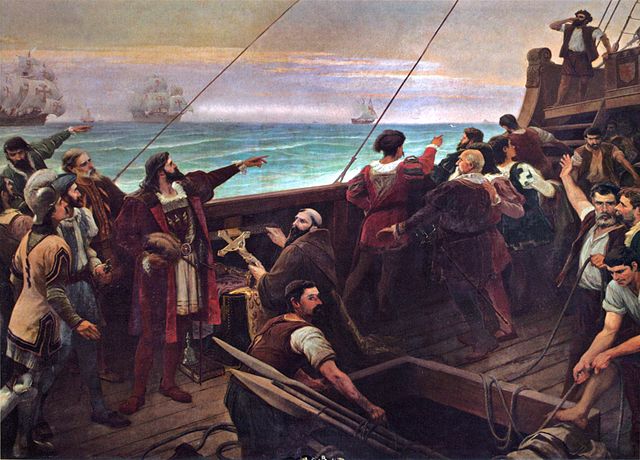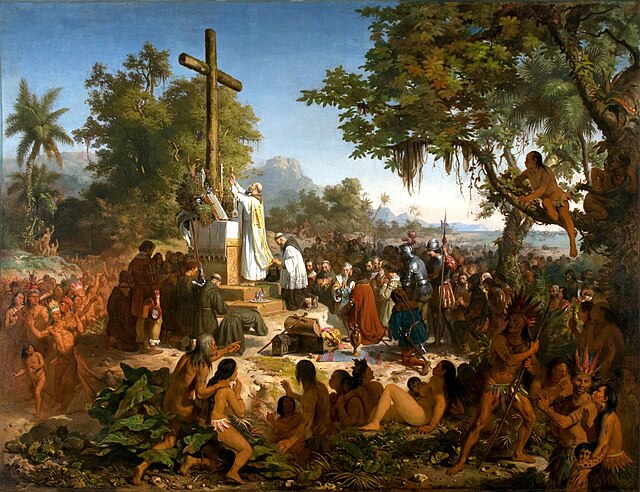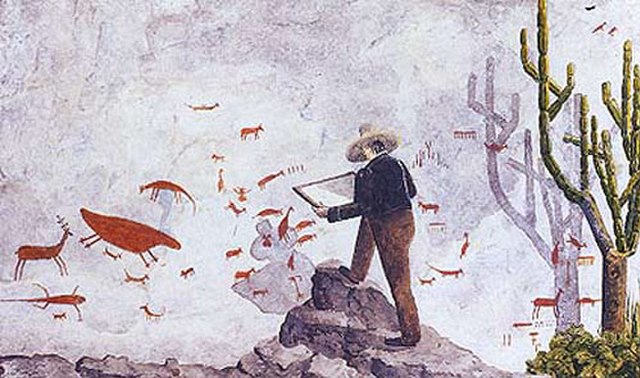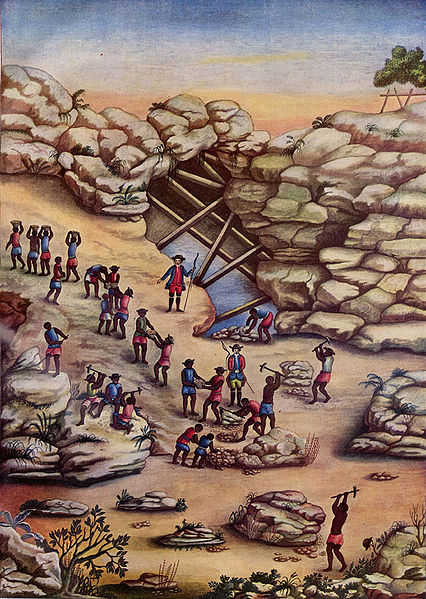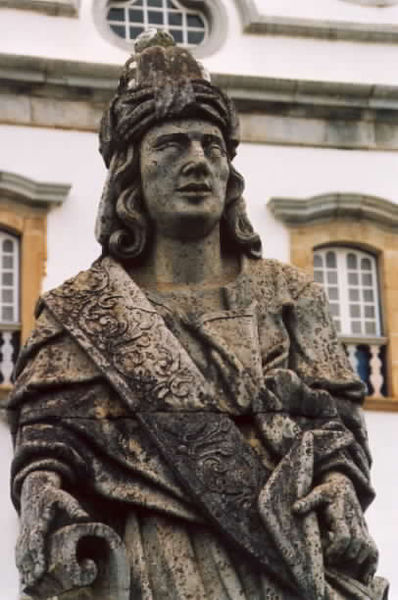Portuguese Brazilians are Brazilian citizens whose ancestry originates wholly or partly in Portugal. Most of the Portuguese who arrived throughout the centuries in Brazil sought economic opportunities. Although present since the onset of the colonization, Portuguese people began migrating to Brazil in larger numbers and without state support in the 18th century.
Portuguese Brazilians
Portuguese explorer Pedro Álvares Cabral (center-left, pointing) sights the Brazilian mainland for the first time on 22 April 1500.
The first Mass in Brazil among the native Indians on April 26, 1500. Painting by Victor Meirelles (1860).
Carioca Aqueduct in Rio de Janeiro as depicted by Leandro Joaquim (1790).
Minas Gerais is one of the 27 federative units of Brazil, being the fourth largest state by area and the second largest in number of inhabitants with a population of 20,539,989 according to the 2022 census. Located in the Southeast Region of the country, it is limited to south and southwest with São Paulo; Mato Grosso do Sul to the west; Goiás and the Federal District to the northwest; Bahia to the north and northeast; Espírito Santo to the east; and Rio de Janeiro to the southeast. The state's capital and largest city, Belo Horizonte, is a major urban and finance center in Brazil, being the sixth most populous municipality in the country while its metropolitan area ranks as the third largest in Brazil with just over 5.8 million inhabitants, after those of São Paulo and Rio de Janeiro. Minas Gerais' territory is subdivided into 853 municipalities, the largest number among Brazilian states.
Lund copying rock paintings in a cave in Lagoa Santa, c. 1840
Borba Gato, painting by Rodolfo Amoedo, 1929
Diamond mining, by Carlos Julião, c. 1770
Baruch, 18th century Baroque sculpture, by Aleijadinho


